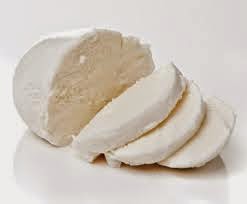POSITIVE PRESSURE MONITORING
THE PASTEURIZER/STERILIZER IS THE HEART OF MILK PROCESSING,IN ORDER TO MAINTAIN QUALITY IN PROCESSING THE EQUIPMENT SHOULD BE DESIGNED IN WAY THAT THE PRODUCT SHOULD BE TREATED IN SAFER WAY.
THE HEAT TREATMENT AND COOLING IN PASTEURIZER/STERILIZER IS DONE BY INDIRECT HEATING AND COOLING THROUGH DIFFERENT TYPE OF HEAT EX CHANGER, (TUBE IN TUBE/PLAT,ETC)
IN HEAT EX-CHANGER THE HEAT OF MEDIA LIKE HOT WATER/STEAM/COOLING WATER/COLD WATER/CHILLED WATER/BRINE WATER ETC WILL TRANSFER TO PRODUCT LIKE LIQUID MILK/SOYA MILK/ICE CREAM MIX ETC,INDIRECTLY
THEIR IS AN INCREASED CHANCE FOR MIXING THE MEDIA IN TO PRODUCT THAT LEAD TO BE POOR PRODUCT QUALITY OR STERILITY.
HERE WE HAVE SOLUTION FOR MONITORING THEES POSSIBILITY, AS LIQUID WILL FLOW FROM HIGH PRESSURE REGION TO LOW PRESSURE REGION.
KEEPING A HIGHER PRESSURE ALWAYS IN PRODUCT SIDE THAN MEDIA IS THE BEST PRACTICE AND CONTROL STRATEGY.
"MAINTAINING THE POSITIVE PRESSURE IN PRODUCT SIDE THAN MEDIA OR IN CASE OF REGENERATION SECTION PROCESSED MILK AND UNPROCESSED MILK IS CALLED POSITIVE PRESSURE MONITORING"
The cover
and the valve body are clamped together. The valve body and the seat are welded
together.
THE PASTEURIZER/STERILIZER IS THE HEART OF MILK PROCESSING,IN ORDER TO MAINTAIN QUALITY IN PROCESSING THE EQUIPMENT SHOULD BE DESIGNED IN WAY THAT THE PRODUCT SHOULD BE TREATED IN SAFER WAY.
THE HEAT TREATMENT AND COOLING IN PASTEURIZER/STERILIZER IS DONE BY INDIRECT HEATING AND COOLING THROUGH DIFFERENT TYPE OF HEAT EX CHANGER, (TUBE IN TUBE/PLAT,ETC)
IN HEAT EX-CHANGER THE HEAT OF MEDIA LIKE HOT WATER/STEAM/COOLING WATER/COLD WATER/CHILLED WATER/BRINE WATER ETC WILL TRANSFER TO PRODUCT LIKE LIQUID MILK/SOYA MILK/ICE CREAM MIX ETC,INDIRECTLY
THEIR IS AN INCREASED CHANCE FOR MIXING THE MEDIA IN TO PRODUCT THAT LEAD TO BE POOR PRODUCT QUALITY OR STERILITY.
HERE WE HAVE SOLUTION FOR MONITORING THEES POSSIBILITY, AS LIQUID WILL FLOW FROM HIGH PRESSURE REGION TO LOW PRESSURE REGION.
KEEPING A HIGHER PRESSURE ALWAYS IN PRODUCT SIDE THAN MEDIA IS THE BEST PRACTICE AND CONTROL STRATEGY.
"MAINTAINING THE POSITIVE PRESSURE IN PRODUCT SIDE THAN MEDIA OR IN CASE OF REGENERATION SECTION PROCESSED MILK AND UNPROCESSED MILK IS CALLED POSITIVE PRESSURE MONITORING"
There are two
different types of construction for Constant
Pressure Modulating valves.
The CPMI-2 and CPMO-2
valves consist of a valve body with valve seat, cover, a
valve plug with a
special diaphragm and a clamp. The diaphragm consists of two flexible EPDM
diaphragms supported by 12 stainless steel sectors in between them.
The CPM-I-D60 consists
of a CPMI-2 valve with additional piping.
Operating principle
The CPMI-2, CPMO-2 and
CPM-I-D60 valves are controlled remotely by means of compressed air. The valves
operate without a transmitter in the product line and only require a
pressure-
regulating valve for the compressed air and a pressure gauge in the
product line (see below).
Where modulating back
pressure is required (i.e., to maintain a fixed flow in and out of the CPM
valve), the air supply to the valve can be provided by an I/P converter
(typically 3-15 psi) and a booster valve. The product pressure dictates the
pressure ratio of the booster valve.
A diaphragm reacts
immediately to any alteration of the product pressure and changes position so
that the preset pressure is maintained.
Inlet side: The
Constant Pressure Modulating Inlet (CPMI-2) valves and the Constant Pressure
Modulating Inlet D60 (CPM-I-D60) valves maintain constant pressure in the
process line at the inlet sid
e of the valve. CPMI-2
and CPM-I-D60 open when product pressure increases and close when product
pressure decreases. These are often installed downstream from separators and
heat
exchangers, and may also be used as overflow valves.
Outlet side: The
Constant Pressure Modulating Outlet (CPMO-2) valves maintain constant pressure
in the process line at the outlet side of the valve. CPMO-2 closes when product
pressure increases and opens when product pressure decreases (see illustration
below). It is often installed upstream from pasteurizers, separators and filler
systems of filtration units.
Options
·
Fittings
in accordance with required standard
·
Air
pressure regulating valve kit, 0-8 bar
·
Diaphragm
in PTFE covered in EPDM or PTFE
·
Seals
in NBR, FPM or PTFE
·
Air
throttling valve for adjustment of regulating speed for the CPM-2 valve
·
Booster
for product pressure exceeding the available air pressure (Product pressure =
1.8 x air pressure)
3A version available on request for CPMI-2 and CPMO-2
valves only  Tel :+918554015860
Tel :+918554015860 fb
fb





.jpg)
.jpg)
.jpg)
.jpg)



.jpg)
.jpg)










.jpg)
































.jpg)

.jpg)